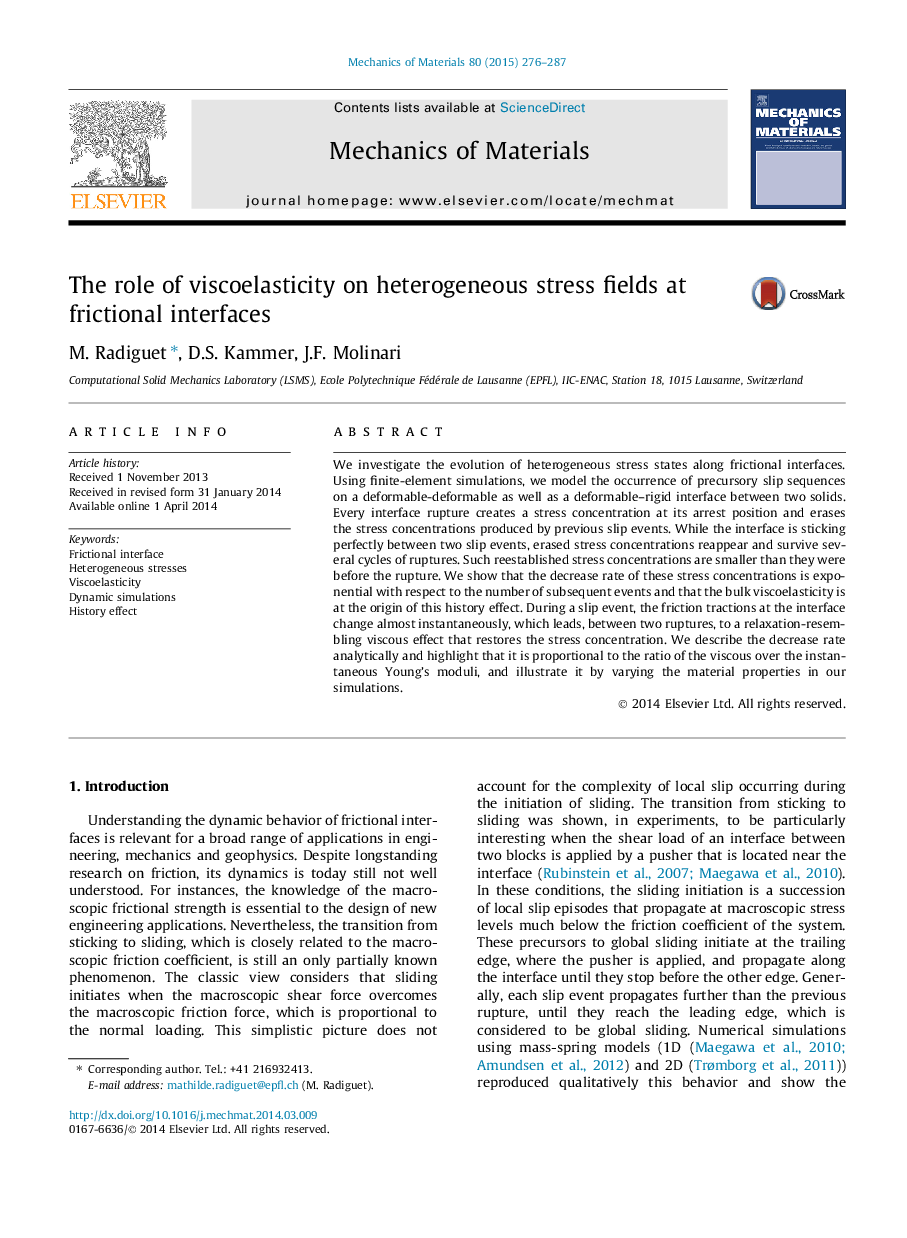| Article ID | Journal | Published Year | Pages | File Type |
|---|---|---|---|---|
| 800273 | Mechanics of Materials | 2015 | 12 Pages |
•We model precursory slip sequences at frictional deformable–deformable and deformable–rigid interfaces.•Stress concentrations created by arrested slip events survive several cycles of ruptures.•The viscoelastic properties of the bulk material control the decrease rate of stress concentrations.•We propose an analytic model that describes well the observed decrease rate.
We investigate the evolution of heterogeneous stress states along frictional interfaces. Using finite-element simulations, we model the occurrence of precursory slip sequences on a deformable-deformable as well as a deformable–rigid interface between two solids. Every interface rupture creates a stress concentration at its arrest position and erases the stress concentrations produced by previous slip events. While the interface is sticking perfectly between two slip events, erased stress concentrations reappear and survive several cycles of ruptures. Such reestablished stress concentrations are smaller than they were before the rupture. We show that the decrease rate of these stress concentrations is exponential with respect to the number of subsequent events and that the bulk viscoelasticity is at the origin of this history effect. During a slip event, the friction tractions at the interface change almost instantaneously, which leads, between two ruptures, to a relaxation-resembling viscous effect that restores the stress concentration. We describe the decrease rate analytically and highlight that it is proportional to the ratio of the viscous over the instantaneous Young’s moduli, and illustrate it by varying the material properties in our simulations.
